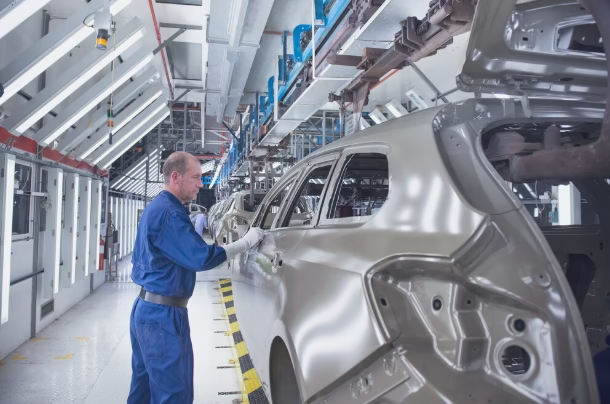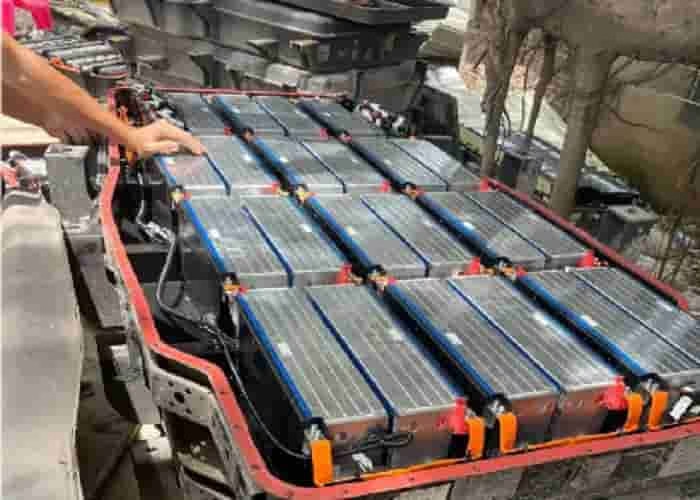New energy vehicles are now becoming a fast-moving consumer product. The idea of driving a car for ten years is a thing of the past. However, cars are large items after all. For most families, they need to pay in installments to ease the pressure of a one-time payment. So when new energy vehicles become fast-moving consumer products, how should consumers respond? The following will be discussed in turn from the following aspects.
I. Why do new energy vehicles become fast-moving consumer products?
1. Accelerated technological iteration
(1) Battery technology is updated and replaced quickly. Battery technology continues to make breakthroughs. The most intuitive feeling is that the range of new energy vehicles is gradually increasing. Pure electric new energy vehicles basically have a range of 600 kilometers, and the long-range version can even reach more than 800 kilometers. Battery management systems are developing rapidly, and the charging speed has been shortened from several hours to more than ten minutes. Take Zeekr as an example. It is equipped with a 5.5c 100kwh battery. The charging power can reach 800kW, and it only takes 12 minutes to charge from 20% to 80%. From the perspective of future development trends, the mass production and application of new batteries such as solid-state batteries will further improve the performance and safety of new energy vehicles. Consumers will change cars to experience better battery technology.
(2) Intelligent driving technologies are emerging in an endless stream. Car companies push new autonomous driving functions through OTA (over-the-air download technology). It is not just a software upgrade, but also requires hardware support, including upgrades to high-performance computing chips, lidar, cameras and other sensors. For example, Tesla improves its autonomous driving capabilities through OTA updates every year to attract consumers to pursue a more advanced intelligent driving experience. Domestic brands that focus on technology include Xiaopeng, Huawei, and Sanjie. After buying a car, once the software is upgraded, the hardware must also be upgraded. Otherwise, you will not be able to experience the latest technology.
2. Fierce market competition
The competition in the new energy vehicle market is becoming increasingly fierce. In order to rank first in sales, major manufacturers are constantly innovating and frequently releasing new products and technical upgrades. New products have larger discounts and more comprehensive configurations. Many old car owners like to use “backstab” to describe their feelings. According to incomplete statistics, in 2024, the number of new energy vehicle models confirmed and planned to be launched in the domestic automobile market will reach 106. Traditional car companies have also entered the new energy field. This competitive situation has accelerated the update speed of new energy vehicles, and consumers are dazzled when buying.
3. Changes in consumer concepts
Today’s consumers, especially the younger generation, have a high acceptance and expectation for smart driving and car networking technologies. New energy vehicle brands meet consumers’ imagination of future life by developing new models and new functions, attracting them to frequently change vehicles. Many car companies not only sell cars, but also convey a concept of technological life.
4. Policy support and promotion
The government has introduced various policies to encourage the development of new energy vehicles to cope with climate change and environmental pollution. The concept of carbon emission reduction has also begun to be implanted in people’s hearts. New energy vehicles belong to clean energy, and replacing fuel vehicles is the general trend. The guidance of the government and the promotion of policies have accelerated the market update speed and boosted the sales of new energy vehicles.
II. Suggestions for consumers
1. Clarify core needs
Clarify the specific scenarios of car use, and match them according to needs to avoid excessive pursuit of configuration.
(1) For daily commuting, if the daily mileage is 50-100 kilometers, a 500-kilometer model is sufficient. Do not pay extra costs for redundant range.
(2) For long-distance needs, if you need to travel long distances frequently, give priority to models with a range of more than 600 kilometers, or directly choose plug-in hybrids that can be powered by oil or electricity to alleviate mileage anxiety.
(3) Regarding the problem of false range, refer to the CLTC operating range. The actual winter range is 70%-80% off. In particular, northern users should consider adding 100-200 kilometers of redundancy.
Charging convenience is very important. If there is a home charging station, it is more convenient. You can plug it in when you get home, without considering the space occupied and service fees. The cost of off-peak electricity is 0.5-0.6 yuan/kWh.
If there is no condition to install a home charger, you should give priority to fast-charging models. For example, the 5c version of the electric car. It can reach a range of 400 kilometers in 10 minutes. You can also use the app to find the surrounding charging stations in advance.
2. Focus on product strength
The three-electric system is the core lifeblood of new energy vehicles.
Battery type: ternary lithium battery, high energy density, better endurance, suitable for low-temperature areas in the north, better performance than lithium iron phosphate, but high cost and slightly weaker safety.
Lithium iron phosphate, high safety, long life, but poor low-temperature performance, more suitable for southern users.
Pay attention to the battery warranty policy, generally provide 8 years/150,000 kilometers warranty, if a lifetime warranty is provided, you need to choose a large factory, otherwise one day the company will go bankrupt, no matter how beautiful the promise will be, it will fall through.
Motor and electronic control, permanent magnet synchronous motor and asynchronous motor each have their own advantages, pay attention to the motor power density, the higher the more energy-saving.
Energy consumption level, look at the power consumption per 100 kilometers, can reach 13-14, which is a normal level, of course, due to different models and tires, the power consumption varies greatly.
Pay attention to the cost of buying a car and the cost of use, and calculate the economic account. Insurance costs are generally higher than fuel vehicles, and choosing mainstream brands can reduce premiums. When setting prices, insurance companies will refer to the accident rate of the entire brand model. If the accident rate is high, the premium will naturally be expensive.
The cost per kilometer of electric vehicles is much lower than that of fuel vehicles, but the premise is that you have to drive enough mileage to make it cost-effective, such as driving 20,000 kilometers a year. The maintenance cost is lower and the maintenance frequency is also low.
When buying new energy vehicles, you don’t have to consider the value retention rate too much. The more you drive, the more cost-effective it is.
III. Pay attention to brand and service
In terms of brand and after-sales service, give priority to brands with experience, because there is still a difference between making cars and making mobile phones. Mature car companies are more reliable in manufacturing experience, chassis tuning, and safety. Don’t be confused by paper parameters.
For new power brands, you need to pay attention to their financial status and long-term operating capabilities. For example, among Wei, Xiaoli, and Li Auto, only Ideal is financially profitable. Xiaopeng and Weilai have not yet gotten rid of their financial difficulties.
After-sales service is also an important reference factor. For example, free roadside assistance, charging assistance, and customer service butlers.
Don’t be overly superstitious about assisted driving technology, let alone over-reliance. It’s okay to show off your skills and brag in front of friends, but don’t leave your life and the lives of your family to algorithms.
IIII. Test drive more
Before making a decision, the consumer is still the king, but once the decision is made, the roles are reversed. Therefore, try different brands more often, and it’s not shameful to be a wait-and-see party. It’s not too late to make a move after mature consideration, and once you make a decision, don’t regret it.
















Leave a Reply